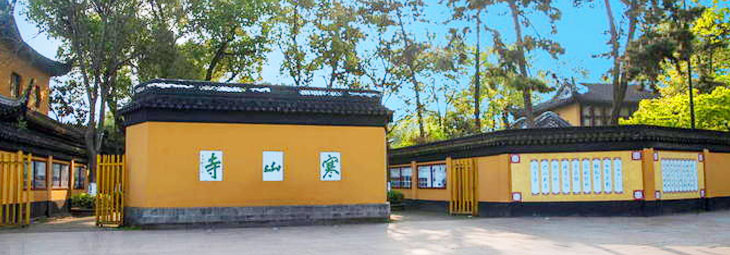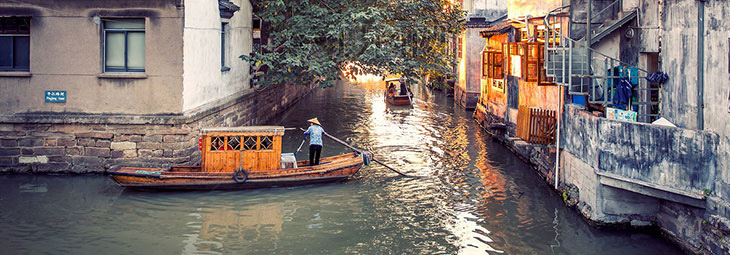- 00 DAY
- 00 HRS
- 00 MIN
- 00 SEC
Conference participants who bear a foreign passport may need to apply for a Chinese visa to visit China. Participants can apply for a visa at the Chinese embassy or consulate in the region where they live. To avoid any uncertainty, participants are advised to apply for the visa as early as possible,
at least one month in advance.
For most attendees, it is easier to apply for a Tourist ("L") visa.
* For more information, please contact the local Chinese Embassy in your country.
The 240-hour visa-free transit is one of China’s visa exemption policies provided to eligible foreigners coming from selected countries.
Under the 240-hour visa-free transit policy, foreign travelers can enjoy a ten-day stay in certain Chinese cities without a visa, provided they come from 54 eligible countries, enter and exit China from eligible ports, stay within the allowed cities and regions, as well as satisfy other requirements.
The applicant must be a citizen of one of the following 54 countries that are eligible for the visa-free transit policy:
To know more details, please visit: https://en.nia.gov.cn/n147413/c178053/content.html
Wuhan is the capital of Hubei Province in the People's Republic of China. It is the largest city in Hubei and the most populous city in Central China. The name "Wuhan" came from the city's historical origin from the conglomeration of Wuchang, Hankou and Hanyang, which are collectively known as the "Three Towns of Wuhan". It lies in the eastern Jianghan Plain, at the confluence of the Yangtze river and its largest tributary, the Han River and is known as "Nine Provinces' Thoroughfare". Because of its key role in domestic transportation, Wuhan is sometimes referred to as "the Chicago of China" by foreign sources.
2025 11th International Conference on Health, Medicine and Life Sciences (MEDLIFE2025) will be held in Wuhan, China during Nov. 23-25, 2025.
Nov. 23, 2025 is the registration time, Nov. 24, 2025 is the keynote session and panel
session
for the conference, and Nov. 25, 2025 is the time for the tourism. Here is the tourism route
(from 8:00AM to 17:00PM):
East Lake Moshan Scenic Area(东湖磨山景区) --- Yellow Crane Tower(黄鹤楼) ---Wuhan Yangtze River Bridge(武汉长江大桥)
1) East Lake Moshan Scenic Area (东湖磨山景区)
East Lake is a large freshwater lake within the city limits of Wuhan, China, the largest or the second largest urban lake in China. Wuhan's East Lake covers an area of 88 square kilometers (33 square kilometers of water area). It is one of the 5A tourist zones of China, and admits over a million people yearly. It is one of the largest sites in Huazhong District. It is also the largest "City Lake" in China. East Lake is made of four areas, Ting Tao, Moshan, Luo Yan Island and Museum of Hubei Province. One end of Moshan features a Daoist temple built over the putative site of where one of the characters in Romance of the Three Kingdoms performed special Qi Men Dun Jia rites before the famous battle of Red Cliffs.

Figure 1: East Lake Moshan Scenic Area (东湖磨山景区)
2) Yellow Crane Tower (黄鹤楼)
Yellow Crane Tower, located on Snake Hill in Wuchang, is one of the "Three Famous Towers South of Yangtze River. According to records, the tower was first built in 223 A.D during the Three Kingdoms period (220-280). After completion, the tower served as a gathering place for celebrities and poets to party and compose poetry. It was estimated that up to the Tongzhi Reign of the Qing dynasty, as many as 300 poems about the tower had been found in historical literature. Cui Hao, a famous poet during the Tang dynasty (618-907), made the tower well known throughout China with his poem "Yellow Crane Tower". Destroyed many times in successive dynasties, the present tower is a complete reconstruction and is the result of four years of work beginning in 1981. It is regarded as the symbol of Wuhan city.

Figure 2: Yellow Crane Tower (黄鹤楼)
3) Wuhan Yangtze River Bridge (武汉长江大桥)
The Wuhan Yangtze Great Bridge, commonly known as Wuhan First Yangtze Bridge, is a double-deck road and rail bridge across the Yangtze River in Wuhan, in Central China. At its completion in 1957, the bridge was the easternmost crossing of the Yangtze, and was often referred to as the "First Bridge of the Yangtze".

Figure 3: Wuhan Yangtze River Bridge (武汉长江大桥)
© Copyright 2015-2025 11th International Conference on Health, Medicine and Life Sciences - All rights reserved.